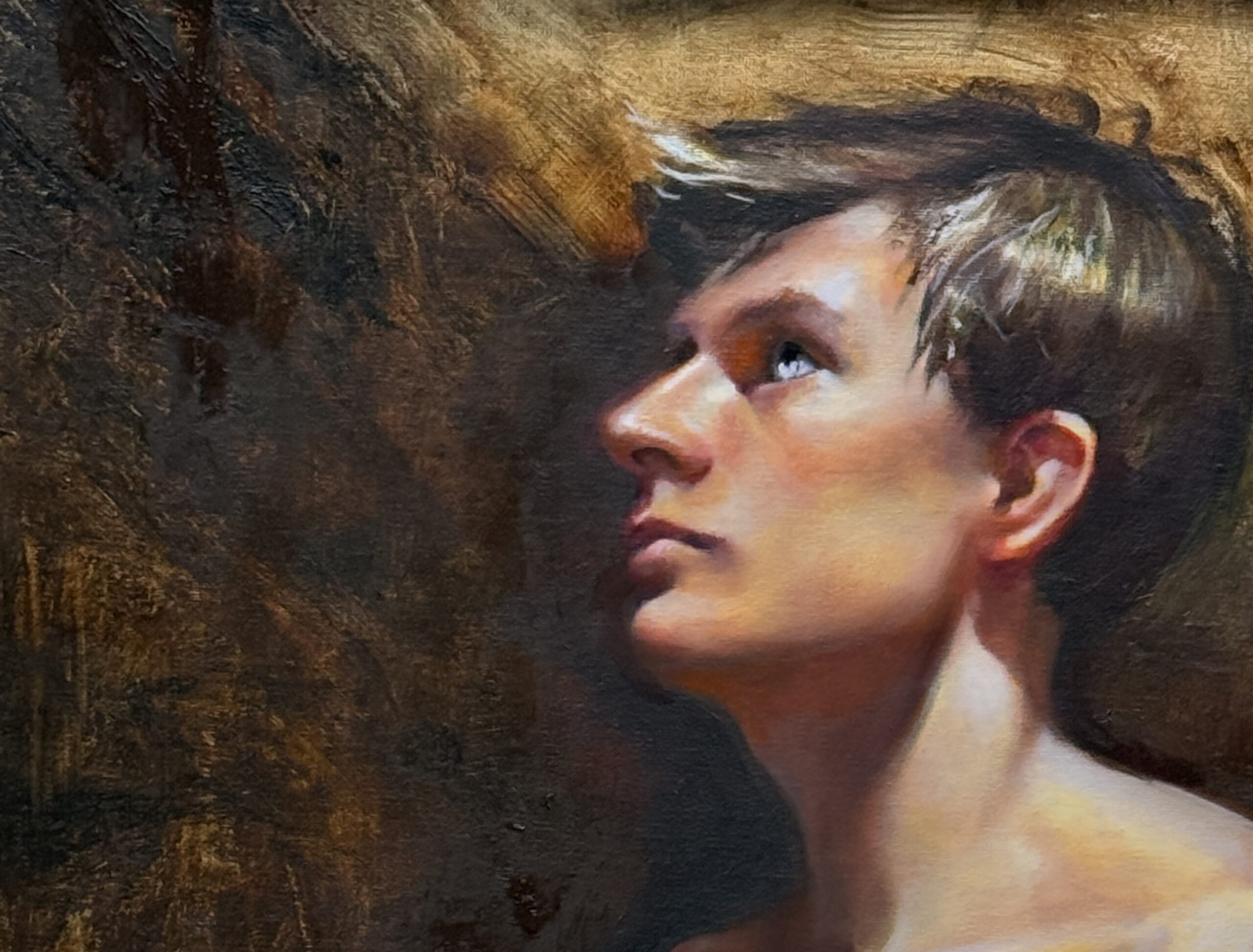
So for a while my son looked like a zombie.
The thing about glazing in oils is that if I have to get back to a glowing light shape I need to “reset” the area and get all the way back down to white again so the colors can be glazed again on top. Putting “lights on top of darks” may be typical in oil painting, but that doesn’t work when you are glazing and creating layers to act like stained glass which is what I want to do here.
Case in point is his eye. I had just scumbled in a dark shape up until this point, but I knew his eye was going to be accented by the direct sunlight. In order to make it “glow” I have to treat it like a watercolor and paint back to the “white base.” This sets the colors overtop of the foundation of white and will let the light hit the painting, travel through the thin layers of colors, hit the white base and then bounce back out to the viewer. So in essence I am treating the oil paint like watercolor -layered “glazes” on white paper. Same goals.
So he looked like a zombie for a while. I added galkyd (from Gamblin) to the white paint to get it to dry faster so I could paint over it in a few days.
Then I began to tighten up the “opera singer” in my image and yet dash looser paint around in the “choir” as as well. (If you are not sure what I mean by “opera singer” here is a link to another blog explaining the concept. Those in my classes and workshops know what I mean!)
https://swannportraits.com/opera/
I want his gaze to be important. My opera singer on stage. The entire narrative of the painting rests on that. If need be, I will wipe it out and repaint it again and again until it has the correct, graceful feeling I want. And the “choir” needs to support and direct to this area.
Next week I’ll show ya how that starts to develop and then how I got so excited to add the rock climbing chalk to his hands!

Christine. Believe it or not, my hubby and I were talking about you this afternoon. (Or. About what you have taught me. Not fully understanding the “choir”, or the “opera”, but getting a fraction of a jist. I’ll need to go back and read the blog about the choir/opera. ) He is color blind. Red/Green. But he also see’s more than I’ll ever be able to see. Grey to him is sometimes green and sometimes brown. Seldom grey. It used to bother him, but now he figures that he’s special. He is actually seeing the “leaning” color of the greys! ETC. (He is very special.) Thanks for a thought provoking blog. You never fail to amaze me.
thanks! Yes I think seeing in that way is special and it makes sense he sees the subtle leanings of color the rest of us miss.